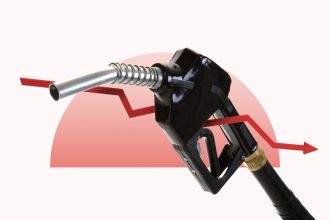Key takeaways
- A secured loan uses an asset as collateral to back the loan.
- Securing a loan with collateral can result in lower interest rates, higher loan amounts and better terms.
- If a business defaults on its loan, the lender can seize the asset to recover its losses.
One of the many decisions small business owners must make when seeking funding is whether to get an unsecured or secured business loan.
A secured business loan is backed by company assets, which act as collateral to secure the loan. If the business fails to repay the loan, the lending institution can seize the collateral in an attempt to recover some of its losses. Providing collateral on a business loan can help your approval chances, access a larger amount of funding or a lower interest rate.
Getting a secured business loan works like getting any business loan, just with the added step of providing information about your collateral. Here’s what you can expect.
1. Review your business’s qualifications
Each lending institution sets its own requirements for securing a business loan. However, there are many common requirements.
One key factor is the business’s annual revenue. Often, the minimum revenue required for an unsecured term loan is higher than the revenue requirement for a loan backed by collateral. That’s because the collateral’s value offsets the risk the lender takes by lending to a less-prosperous business.
Lenders may review your personal and business credit score. A high score could result in getting approved for a higher loan amount and lower interest rate.
Other factors include how long the company has been in business, the purpose of the funds and the company’s plan for repaying the loan.
2. Calculate how much money you need — and how much you can afford to repay
Knowing how much money your business needs and the monthly amount it can afford to repay will help you compare banks and submit applications.
For example, if you need $50,000 but can’t afford the payment for a three-year term, you could increase the length of the loan to four or five years. A business loan calculator will help you determine your monthly payment based on the amount borrowed, the loan’s repayment length and its interest rate.
You’ll also want to determine if you need all the funding at once, as you would if buying equipment or a vehicle. If you need a smaller amount now and the rest later, you may want to consider a business line of credit or business credit card. Both enable you only to make payments on the money you’re currently using and draw the remainder as needed.
3. Choose your collateral
Businesses can use various assets to secure a business loan, including:
- Cash, including funds held in business bank accounts.
- Investments like stocks and bonds.
- Unpaid customer invoices.
- Real estate property owned by the business, including buildings and land.
- Business assets such as machinery, vehicles or other equipment.
- Goods or products held by the business as inventory.
- A blanket lien that grants a lender the legal authority to seize any business assets if the business defaults on the loan.
If you’re using previously purchased property to secure a new business loan, you may need to get the property appraised — though sometimes the lender handles that step.
Lending institutions may require the collateral’s value to match the loan’s amount. For a $50,000 loan, you would need collateral worth $50,000.
But since the value of some assets like property and equipment is subjective, the bank may place a lower value on the collateral than you would. If this happens, you must come up with additional collateral, increase your down payment or accept a reduced loan amount.
Some lenders will require a UCC (Uniform Commercial Code) lien. This can be filed against an individual asset or as a blanket lien against all business assets. It protects the lending institution if the business files for bankruptcy. Since a UCC lien could potentially put all business assets at risk, this may be another factor to consider when choosing between lending institutions.
Bankrate tip
You may also be able to use personal assets as collateral. Just keep in mind that if you fail to repay your loan, you will likely lose the personal asset.
4. Compare lenders and loans
There are options for secured business loans beyond large national banks like PNC Bank, small community banks and credit unions. Online lenders also offer secured term loans, lines of credit and other business loan products.
- SBA loans: These loans are backed by the Small Business Administration (SBA) and offer longer repayment terms and lower interest rates to small businesses, supporting various needs like working capital, expansion and equipment purchases.
- Business term loans: Lump-sum loans used for various business purposes like expansion or inventory. They are typically repaid with interest through regular installments over a specified period.
- Equipment financing: Loans specifically designed for purchasing business equipment, allowing businesses to acquire necessary assets while spreading the cost over time. Equipment loans are secured by the equipment being purchased.
- Business line of credit: Provides access to funds up to a predetermined limit to help with short-term expenses. Businesses can withdraw money as needed, and they can borrow again as they pay down past draws and have credit available. You typically secure a business line of credit with cash, and your credit limit is equal to the amount of cash you put down.
- Commercial real estate loans: Businesses looking to purchase or refinance commercial properties can use commercial real estate loans. These may offer long repayment terms and are secured by the property itself.
- Invoice financing: Businesses use their outstanding customer invoices to secure financing, either as a loan or by selling the invoices to the lender. The lender gets paid when the customer sends in the invoices.
- Inventory financing: Uses inventory as collateral, helping businesses acquire or maintain inventory levels for sales and production. The inventory serves as collateral for the loan.
Generally speaking, traditional lenders offer lower rates, while online lenders offer faster and easier-to-access funding. Make sure to compare both.
Bankrate insight
5. Gather your documents
Each lending institution requires a number of documents related to yourself and your business as part of the application process.
The lender should provide you with a list of its requirements, but common business loan documents include:
6. Complete your applications
Many lenders have online applications, but some traditional lenders require you to apply over the phone or in person.
To make the process easier, gather all the information in advance. This may include the amount you’re requesting, your preferred term length and the documentation the lender requires. You may also need to have the owner or owners’ address, phone number, date of birth and Social Security number.
The bottom line
Secured business loans provide a viable financing option for businesses in certain situations. By offering collateral like real estate, equipment or inventory, businesses could access more funds at lower interest rates or with longer repayment terms. But it’s necessary to evaluate the risks involved and ensure you can make repayments to avoid potentially losing assets.
Frequently asked questions
-
With a secured business loan, you use an asset to guarantee the loan. In the event of a default, this asset can be liquidated to cover the remaining loan amount for the lender. Offering collateral can result in a lower interest rate, higher loan amount or easier approval.
-
It may be easier to get a secured business loan than an unsecured business loan. The collateral lowers the lender’s risk of issuing the loan, allowing it to accept riskier businesses that may not qualify for a secured loan. It can seize the asset if the business defaults on the loan.
-
Collateral for securing a business loan can be almost any type of property with value. Typical assets are real estate, equipment, vehicles, inventory, invoices, investments and savings.
Why we ask for feedback
Your feedback helps us improve our content and services. It takes less than a minute to
complete.
Your responses are anonymous and will only be used for improving our website.
Help us improve our content
Read the full article here
















